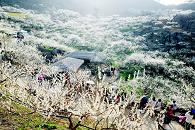

Gwangyang in South Jeolla province, the Republic of Korea (ROK) has a population of about 150,000 and covers an area of 456 square kilometers. It is located at the southernmost tip of the country, 100 kilometers away from Busan's urban area.
It is a free trade zone and one of the three free economic zones in ROK, with the others being Busan and Incheon.
POSCO, the world's third-largest steel company, established a plant in Gwangyang in 1986. Boasting advanced steel production technology and equipment, the Gwangyang plant was the largest of its kind in the world by 2010, achieving an annual output of 20 million tons.
Gwangyang Port is the second largest container port in ROK and the largest new port that the country has built in this century. It is blessed with a natural waterway 22 meters deep and a favorable climate condition. Due to its unique geographic location, the surrounding islands and mountains constitute natural breakwaters for the port.
In just 13 years since its opening in 1998, Gwangyang Port has built 16 50,000-ton berths, with an annual processing capacity of 5.48 million TEUs.
The regional GDP of Gwangyang was $4.8 billion in 2011, and its per capita GDP exceeded $31,000.
The proportion of the primary, secondary, and tertiary sectors in Gwangyang is 15 percent, 22 percent, and 63 percent, respectively. The four strategic industries of Gwangyang involve steel, port logistics, agricultural tourism, and shipbuilding.
Gwangyang is rich in natural tourism resources, such as the Seomjin River, which is one of the five longest rivers in ROK. In addition, the Gwangyang steel plant and Gwangyang Port are also two landmarks with industrial tourism value. The city hosts an international plum flower festival every March and a barbecue festival every October.
Gwangyang established international friendly exchange ties with Xiamen in East China's Fujian province on Nov 22, 2007.

